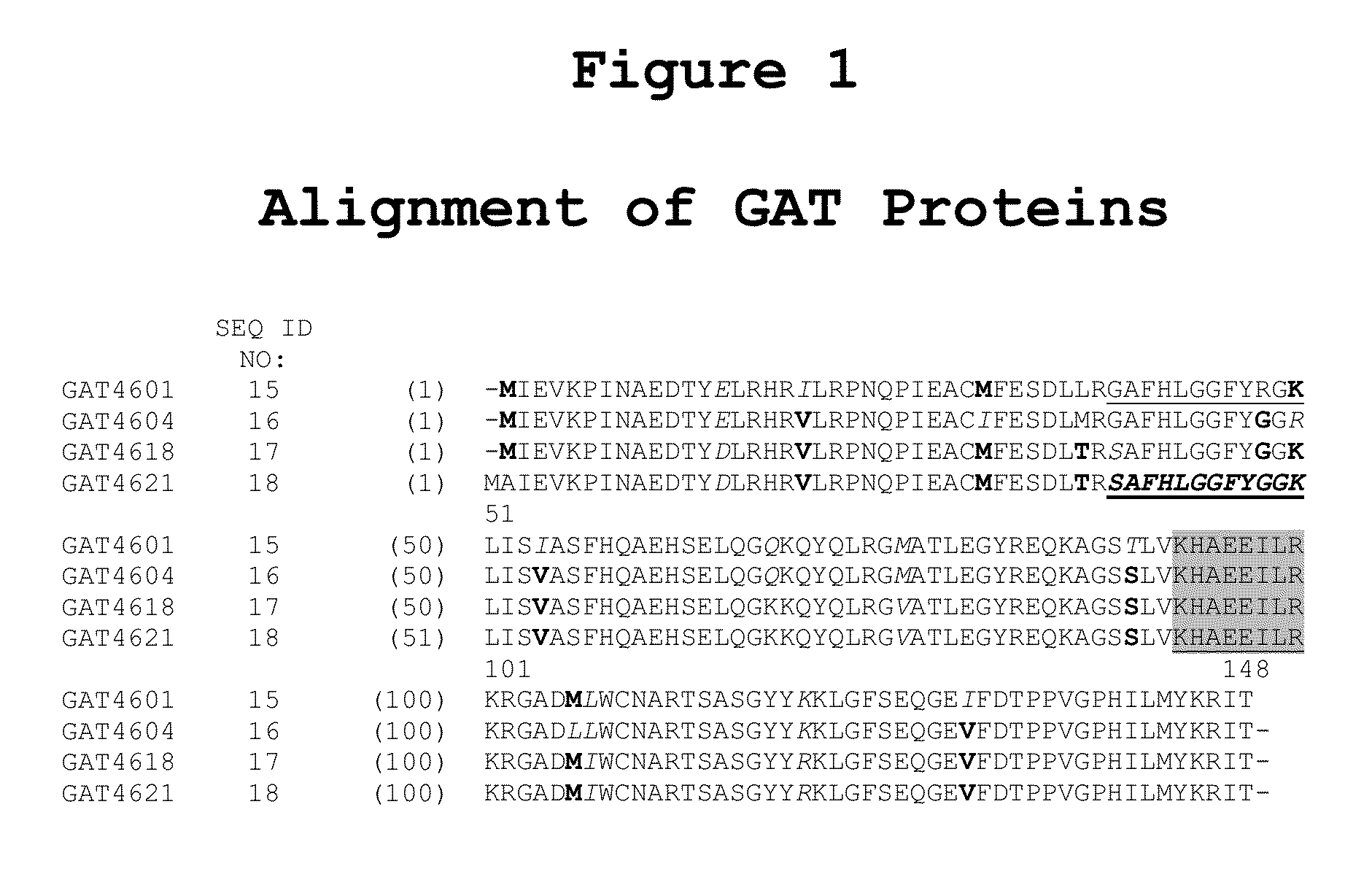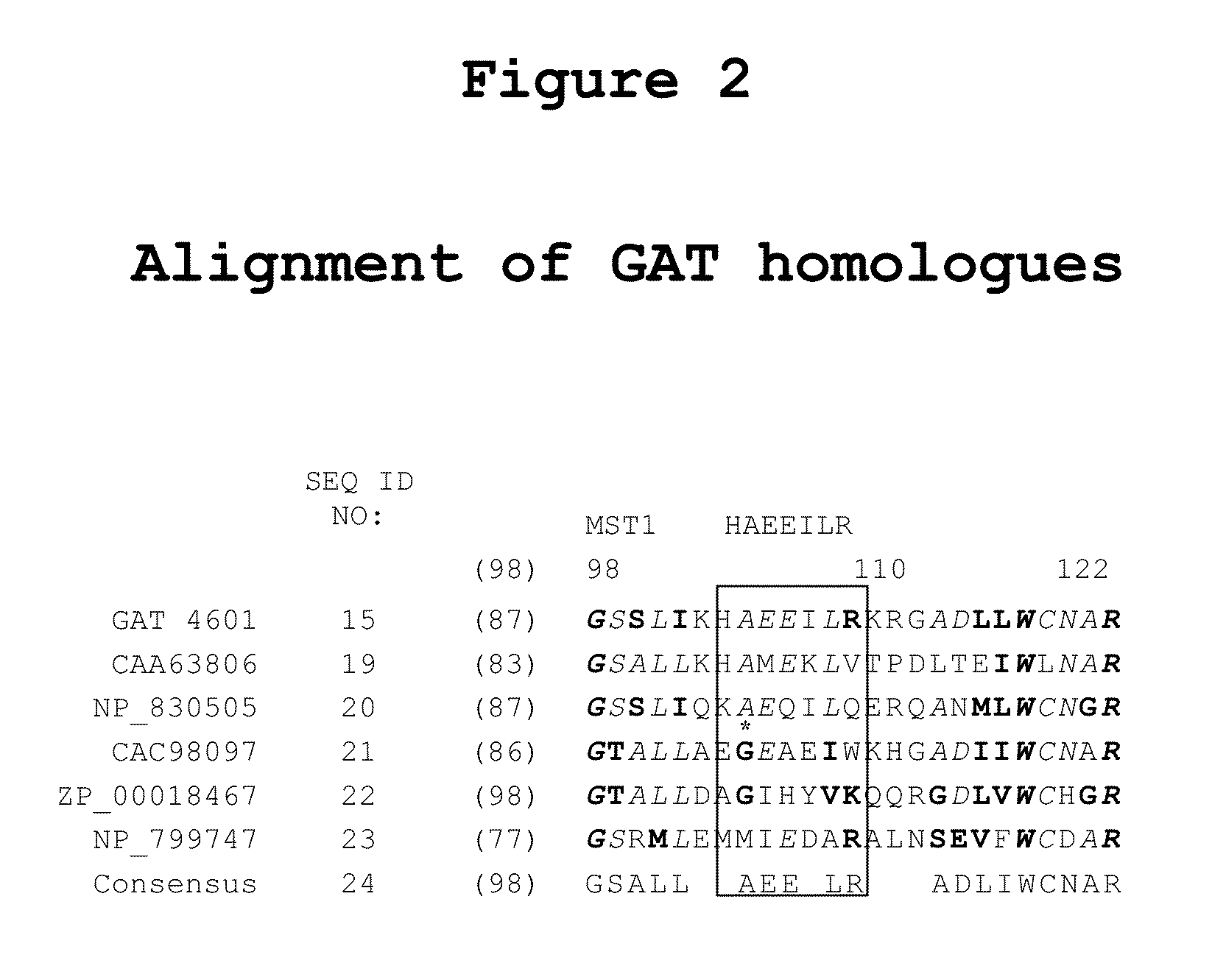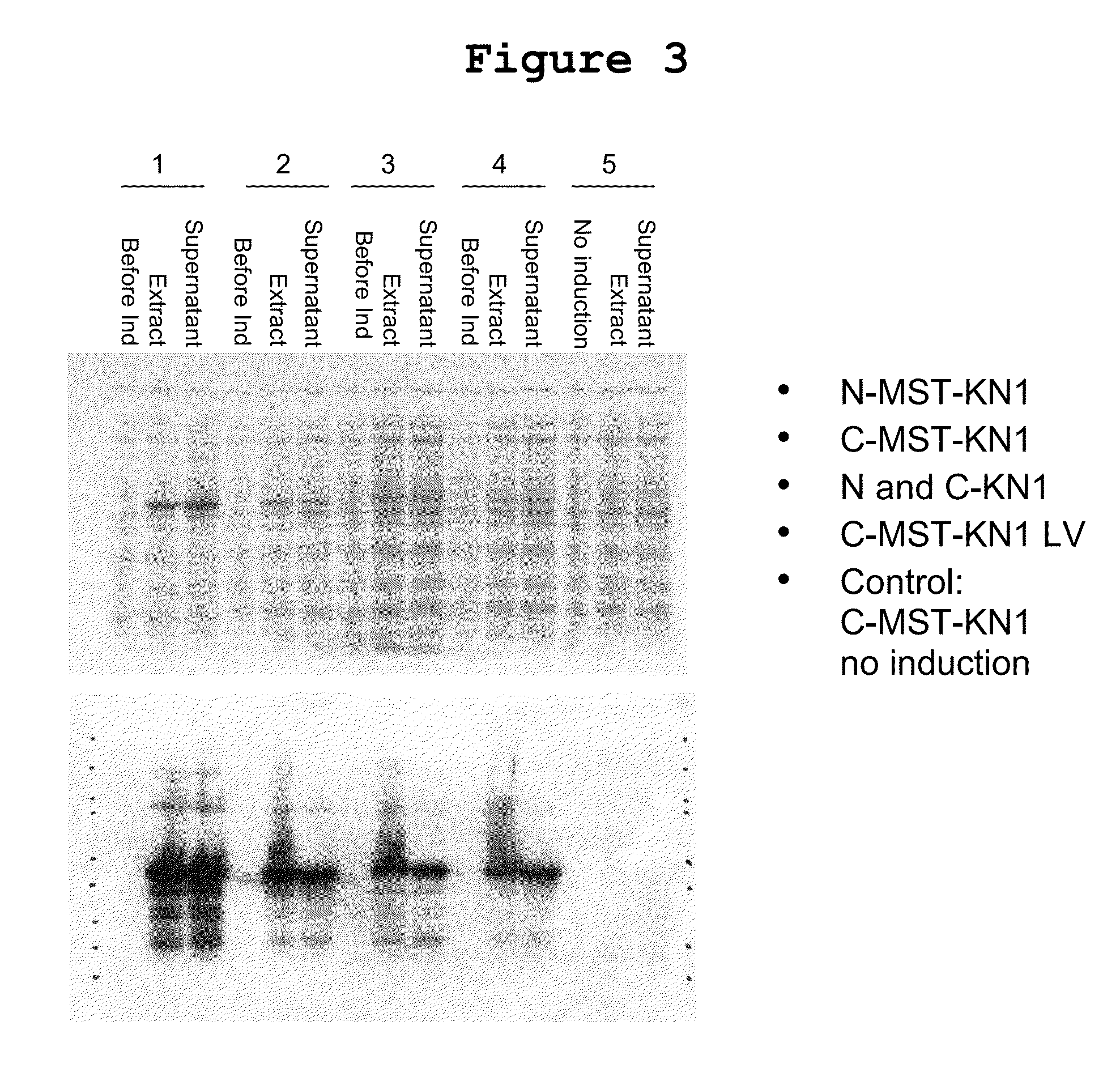Universal peptide tags for transgene polypeptide analysis by mass spectrometry
a technology of mass spectrometry and peptides, applied in the field of biotechnology, can solve the problems of poor statistical correlation of conventional screening tools, high cost and time-consuming development of immunoassays, and inability to detect and quantify polypeptides accurately, and achieve rapid detection and accurate quantification, the effect of rapid detection
- Summary
- Abstract
- Description
- Claims
- Application Information
AI Technical Summary
Benefits of technology
Problems solved by technology
Method used
Image
Examples
example 1
Over-Expression of MST-Tagged Knotted1 Polypeptides
[0146]GAT-derived signature peptides were utilized as universal peptide tags with the maize protein Knotted1, a Ceriporiopsis subvermispora oxalate oxidase (oxox) protein, or a DsRed2 fluorescent protein. As shown, the universal peptide tags were positioned at either the N-terminus, the C-terminus, or at both termini of their associated protein. Detection of the universal peptide tags was performed in E. coli, tobacco, and maize. Parameters evaluated included: the use of variant universal peptide tags, placement of universal peptide tags at one or both termini of the polypeptide, utilization of multiple universal peptide tags on the same polypeptide, and incorporation of a linker peptide between the polypeptide of interest and the universal peptide tag.
[0147]Over-Expression of MST-Tagged Knotted1 Polypeptides in Escherichia coli:
[0148]The full length maize Knotted1 (KN1) (Vollbrecht et al. (1991) Nature 350241-3) clone was identifi...
example 2
Detection of Double-Tagged MST-KN1 Polypeptides in Cell Extracts
[0157]Constructs for two double-tagged MST-KN1 polypeptides were created and transfected into E. coli for expression. Cells were subsequently treated with IPTG to induce the expression of MST2-KN1-MST3 (SEQ ID NO: 30), or MTS3-KN1-MST2 (SEQ ID NO: 31).
[0158]Coomassie blue staining clearly demonstrated induction of the MST2-KN1-MST3 polypeptide in both the polypeptide extract and the whole cell extract of cells induced with IPTG when compared to extracts collected prior to induction with IPTG or cells transfected with a vector (pET28) control (FIG. 5).
[0159]Following sample preparation, tryptic digestion and acidification with formic acid, the MST2-KN1-MST3 polypeptides were detected by LC-MS / MS. Both the MST2 and MST3 universal peptide tags were separately detected at retention times of 1.2 minutes and 1.31 minutes, respectively, in samples from cells induced with IPTG (FIG. 6). By comparison, extracts from cells that w...
example 3
Detection of MST-KN1 Polypeptides in Spiked Maize Leaf Extracts
[0160]E. coli extract containing MST3-KN1-MST2 polypeptide from was added to maize leaf extract (5% volume / volume). Following sample preparation including tryptic digestion and acidification with formic acid, the MST3-KN1-MST2 polypeptides were detected in the maize leaf extract by detecting of universal peptide tags with LC-MS / MS (FIG. 7). The retention times of these peptide tags were confirmed by synthetic peptides. No interference peaks were found in the negative control samples where no MST3-KN1-MST2 polypeptide solution was spiked.
PUM
| Property | Measurement | Unit |
|---|---|---|
| temperature | aaaaa | aaaaa |
| flow rate | aaaaa | aaaaa |
| turbo temperature | aaaaa | aaaaa |
Abstract
Description
Claims
Application Information
 Login to View More
Login to View More - R&D
- Intellectual Property
- Life Sciences
- Materials
- Tech Scout
- Unparalleled Data Quality
- Higher Quality Content
- 60% Fewer Hallucinations
Browse by: Latest US Patents, China's latest patents, Technical Efficacy Thesaurus, Application Domain, Technology Topic, Popular Technical Reports.
© 2025 PatSnap. All rights reserved.Legal|Privacy policy|Modern Slavery Act Transparency Statement|Sitemap|About US| Contact US: help@patsnap.com



